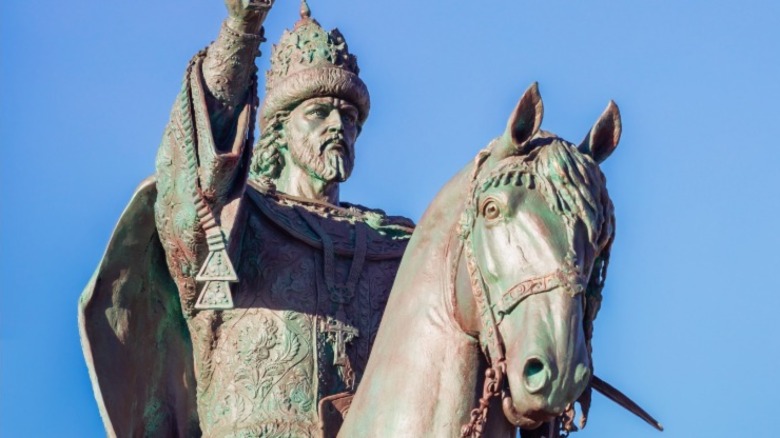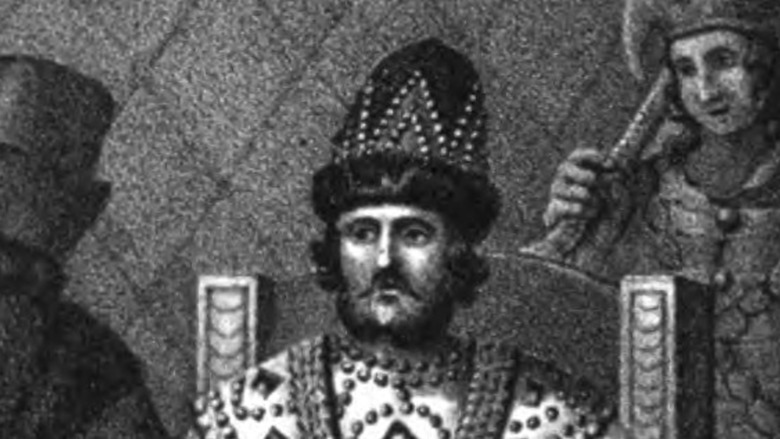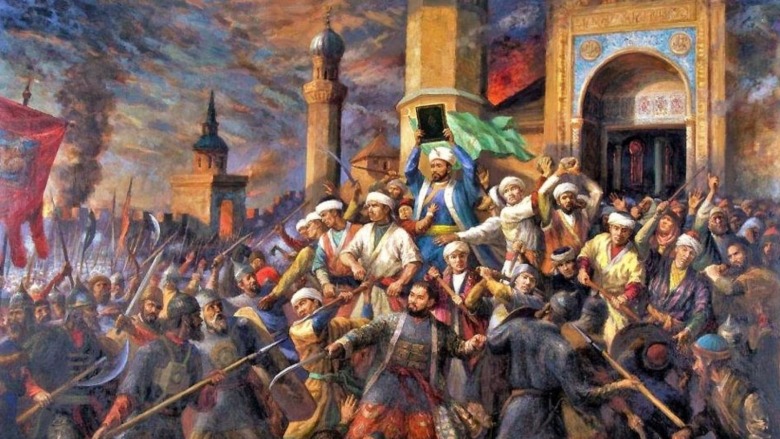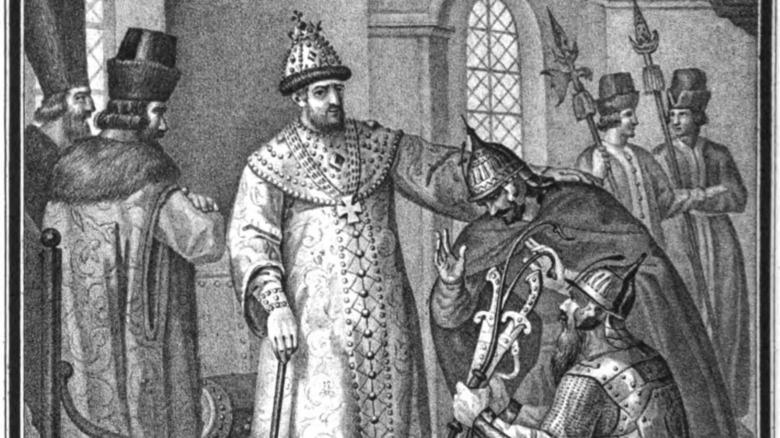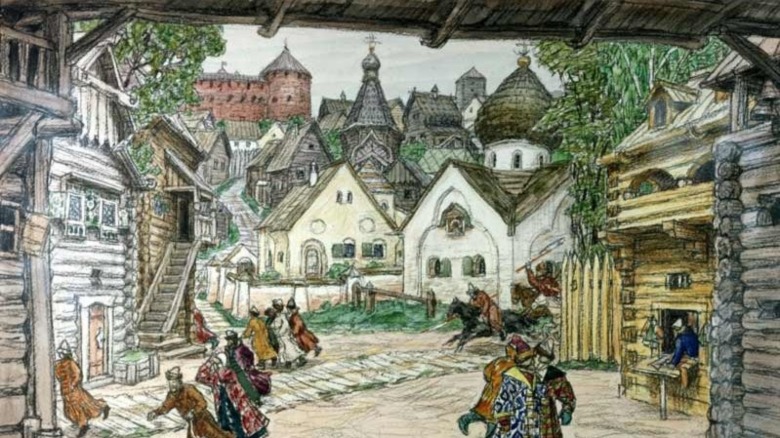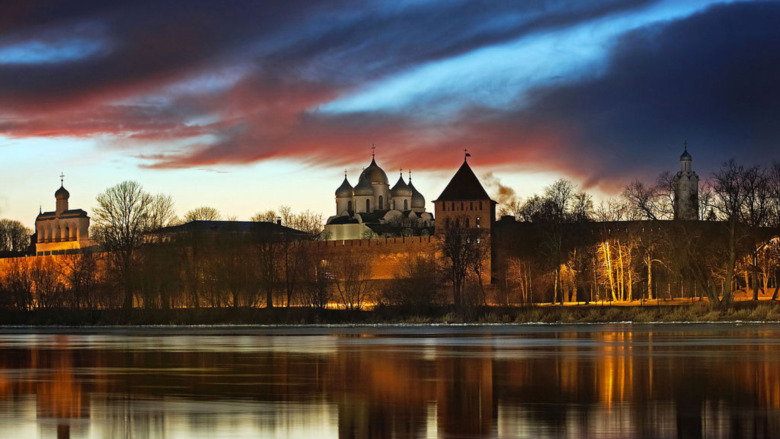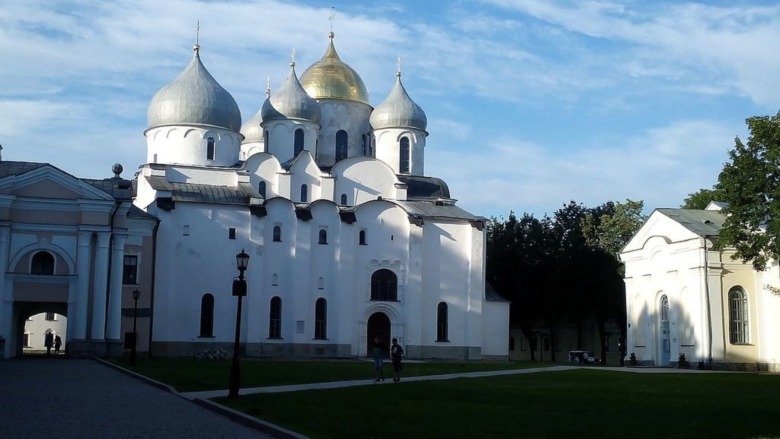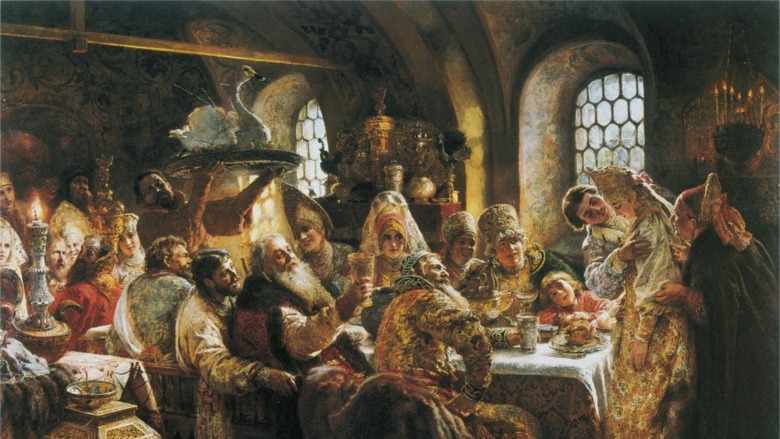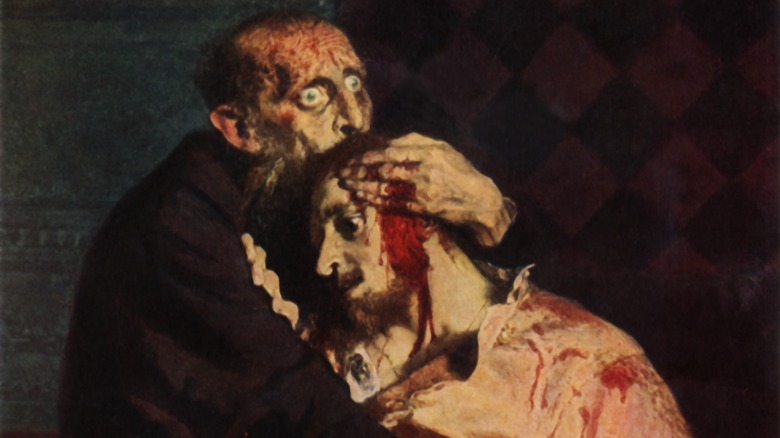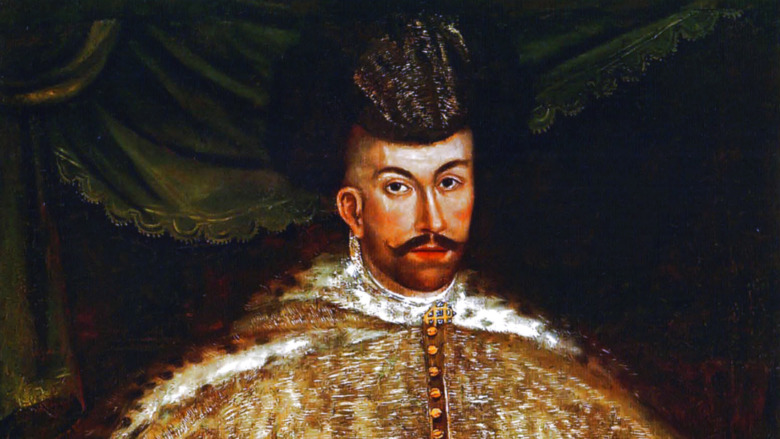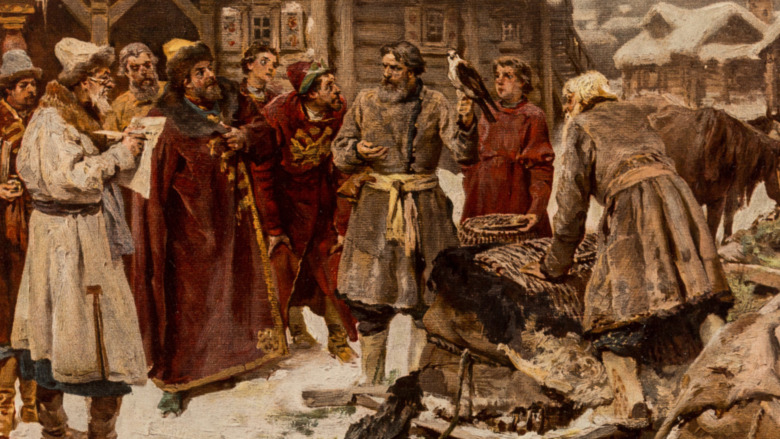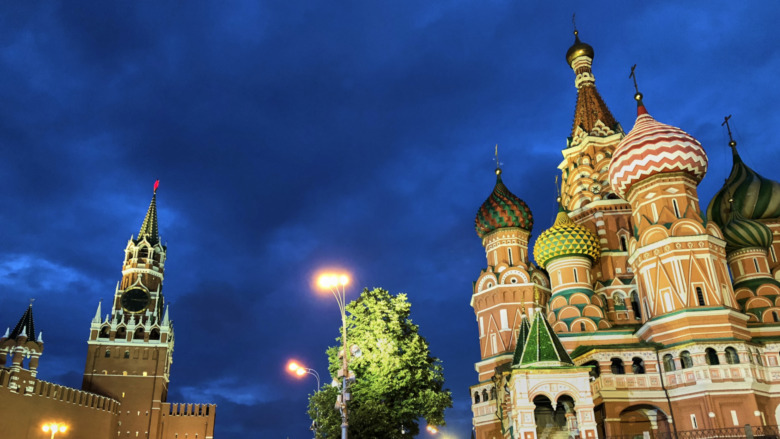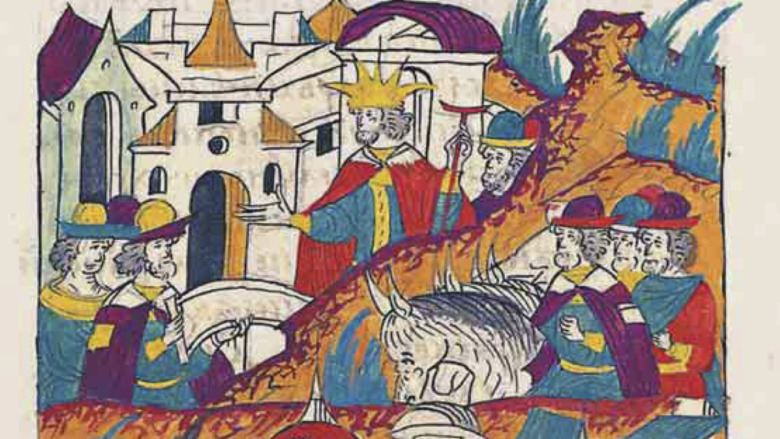The Worst Things Ivan The Terrible Ever Did
Modern Russia owes a great debt to Tsar Ivan IV "the Terrible." His conquest of the Muslim Tatar khanates and the extension of the Russian frontier towards the Caucasus and the Urals set in motion the processes that would result in an empire that stretched from Finland to the Pacific Ocean.
However, there was a less savory side to him. Popular culture knows him as a cruel ruler who waged expensive and bloody wars at the expense of his subjects and ruthlessly eliminated his domestic political opponents. But how true are these tales? Here are some of his alleged atrocities, some of which are confirmed in the historical record, but others of which are exaggerated at best, and lies at worst.
Why was Ivan terrible?
Ivan the Terrible's nickname does not imply evil or cruelty . In 16th century Russian, the word grozny meant "formidable" or "fearsome," a moniker earned through his expansion of Russia . Nevertheless, Ivan's reputation for cruelty was written in the stars, so to speak. Prince Andrei Kurbsky's History of the Grand Prince of Moscow described Ivan as the progeny of his father's lust and rejection of Christian virtue, establishing his reputation for cruelty as innate. Ivan's father, Grand Duke Vasili III of Muscovy (Russia after 1547), had divorced and cloistered his previous wife to marry Yelena Glinskaya, who gave birth to Ivan in 1530.
Grand Duke Vasili died in 1533 when Ivan was only three, per Britannica. His mother served as regent but died when he was eight, possibly poisoned by her rivals, according to historian Carolyn Pouncy. The regency passed through a succession of boyar (Russian nobility) families until Ivan turned 17.
Life under the boyars was difficult for Ivan. He was treated with contempt and witnessed murders, betrayals, and many other atrocities at court that would traumatize most children. Unable to retaliate, Kurbsky claimed that Ivan turned to abuse as an outlet for his frustration, throwing animals off towers and walls. Once he reached the age of majority, Ivan freed himself from boyar control and declared himself tsar of Russia, a title he would defend with an iron fist.
The siege of Kazan
Ivan's first objective as tsar was the conquest of Kazan. When the Mongol-Tatar Golden Horde broke up in the 15th century, it left behind numerous successor states, among which was the Khanate of Kazan. Kazan maintained its independence from Moscow, but its position was compromised when a period of unrest saw several different khans take control over several years.
Taking advantage of this instability, Ivan besieged the city of Kazan in 1551 with an army of 150,000 men. After its defenders rejected Ivan's offer of surrender and freedom to keep their Islamic religion, as recorded in the Kazan Chronicle, the fighting began. As the siege dragged on, Ivan tried to break the defenders' resolve with terror.
English scholar Sir Henry Howorth recounts Prince Andrei Kurbsky's claim that Ivan's men tied their Tatar prisoners to stakes before the walls. The tsar then threatened to kill them unless the defenders surrendered the city. Kazan's defenders, however, one-upped the tsar, killing their comrades rather than leave them in non-Muslim hands. Once Russian forces finally entered Kazan, Ivan had the population massacred and deported, the only solution, according to Howorth, which would give the Russians a complete victory over their fearsome and unrelenting enemies.
Ivan the Terrible executed the man that saved his throne
After Kazan, Ivan turned his attention to the Khanate of Crimea. According to medievalist Eizo Matsuki, the Crimean Tatars were notorious for raiding Russian villages for women to sell in slave markets. In 1571, while Ivan was fighting the Livonian War against Poland-Lithuania, Crimean Khan Devlet Giray went further and sacked Moscow so thoroughly that the Moscow River overflowed its banks with bodies and wreckage.
Giray's stunning success encouraged him to repeat his feat in 1572. This time, Ivan left troops under Mikhail Vorotynsky, whom the Kazan Chronicle praised for his bravery and skill, to stop the Crimeans. At the Battle of Molodi, Vorotynsky routed the Tatars despite being outnumbered two to one. While some might expect gratitude for such distinguished service, Andrei Kurbsky records that Vorotynsky was brutally executed for his victory, one of Ivan's worst atrocities against a man that had served him so loyally.
A servant accused Vorotynsky of plotting the tsar's death through magic. As punishment, Ivan had him "tied to a stake between two fires" and personally led the torture, raking the coals under Vorotynksy's body and burning him just up to the point of death. Ivan then removed him from the stake while Vorotynsky was still alive and ordered him imprisoned in the northern Vologda region. Mercifully, Vorotynsky died before he could arrive there.
He created a parallel nobility that functioned as his enforcers
While Ivan's armies terrorized his Tatar enemies, Ivan ensured that Russians would feel his wrath too. Concerned with the power of the boyars, Ivan attenuated their influence by dividing the realm into the zemshchina and the oprichnina. The latter institution/organization was created from land confiscated from the nobility, whose owners were executed if they refused to support it. The land under the oprichnina system was directly under Ivan's control, unlike the zemshchina, which remained under local institutions.
The oprichniki, the enforcers of the oprichnina, had one job, namely to terrorize Ivan's enemies. According to historians Maureen Perrie and Andrei Pavlov, it offered lower ranking nobles the opportunity to increase their influence by killing off Ivan's political enemies and seizing their properties, redistributing wealth away from them. Later descriptions depicted the oprichniki as black-robed riders on black horses allegedly carrying severed dogs heads to give the appearance as the riders of hell.
Per the Marquette University History Department, the oprichniki indulged in cult-like assault, murder, and torture, even bursting into churches and killing priests and parishioners mid-liturgy. It was even described as a pseudo-monastic order centered around Ivan, who would give sermons to the members while they tortured their victims. While this is likely an exaggeration, the oprichniki are recorded as participating in multiple atrocities against Ivan's opponents, including the notorious Novgorod Massacre of 1570.
He executed the archbishop of Novgorod on a rumor
Historian Ruslan Skrynnikov writes that in 1569, the cities of northwestern Russia, led by Ivan's close ally Archbishop Pimen of Novgorod, were planning to defect to Poland. Ivan marched on Novgorod with his oprichniki, plundering towns and monasteries along the way and killing or jailing anyone traveling to Novgorod, which was cordoned off to prevent any potential traitors from escaping. What happened next came without warning for the inhabitants.
On Sunday January 8, 1570, Ivan entered Novgorod and accused Pimen of conspiring to turn Novgorod over to Poland. Here, things become quite disturbing. Ivan did not want to commit the mortal sin of missing Sunday liturgy, so he forced the archbishop to say mass one more time. After, Ivan had Pimen arrested.
German eyewitness Albert Schlichting provides the more lurid details. The oprichnina snatched away Pimen's monastic head covering (a major act of disrespect) and "married" him off to a mare. He then had to ride that mare through the city accompanied minstrels, also referred to as buffoons. Per Russell Zguta, the Orthodox Church opposed the minstrels for their pagan associations and encouragement of vice, so this was the ultimate disrespect to the archbishop. Ironically, despite his support for Ivan's repressive policies when it suited the church, Pimen met his end under those same policies, dying in prison in 1571.
... and then massacred the whole population in winter
While Ivan charged the alleged traitors, the oprichnina plundered Novgorod's churches and monasteries, not even sparing the Cathedral of St. Sofia, which for the supposedly-devout Ivan, should have been sacrilege. The Novgorod Chronicle, however, describes that Ivan's grandfather, Ivan III, committed a similar massacre in 1471 because Polish "Latinism" threatened Orthodox hegemony in Novgorod. Ivan's imitation of his grandfather's massacre suggests similar justifications, except that unlike his grandfather he extended the bloodshed to the populace.
Following Archbishop Pimen's arrest, Ivan charged Novgorod's entire population with treason, says History Collection. He first targeted the mercantile classes, whose wealth, per Janet Martin, was transferred to the oprichniki. The commoners and peasants seeking shelter in the city were not spared either. The ravages of war with Poland had devastated the region's farmland. When Ivan destroyed their villages, he left many homeless and left them in the harsh Russian winter to fend for themselves. While approximately 4,000 died in the massacre itself, many more died after it was over from its aftereffects — History Collection estimates some 100,000. Novgorod, formerly one of the jewels of the old Rus', was reduced to a small provincial town, never to regain its past glories.
Historian Hugh Graham of California State, Bakersfield, has contested the more gruesome details, since the sources were written by Ivan's enemies. However, the evidence suggests that blood was shed in Novgorod that year. Swedish diplomat Paul Juusten's firsthand account relays the torture and imprisonment of his party, so it is difficult to deny that something happened. Herman Hildrebrand, a Dutch traveler, interviewed Novgorod's inhabitants years later. They corroborated the humiliations that had been imposed on the city, suggesting that the massacre was indeed one of Ivan's most atrocious moments.
He beat his daughter-in-law and killed his unborn grandchild
Ivan's relationship with his son, Ivan Ivanovich, was marred by Ivan's insistence on controlling his son's private life. Ivan was obsessed with the production of a male heir and over his life he had eight wives, says The Vintage News. His preoccupation with succession extended to meddling with his son's private life as well.
Ivan Ivanovich had married two women, both of whom Ivan IV had cloistered for failing to conceive a male child quickly enough, says Horror History. Ivan Ivanovich's third wife became pregnant in 1581, giving her the possibility of avoiding her predecessors' fates. However, this was not to be. One day, Ivan the Terrible walked in on her when she was wearing nothing but her undergarments, which Ivan viewed as immodest. Since his daughter-in-law was pregnant and resting, she did not expect the tsar's visit. Ivan viciously beat her, causing her to miscarry. As he beat his daughter-in-law, she screamed for help, calling her husband into the room.
Ivan the Terrible then killed his son
Per Antonio Possevino, Tsarevich Ivan ran into the room to defend his wife. He demanded to know why, after forcing his first two wives into a convent, his father was now killing his third wife and his child. Ivan the Terrible was allegedly filled with rage and struck his son with a staff in the head, cracking his skull. Unlike previous incidents, Ivan was full of remorse for his behavior. Possevino records that he immediately sent for doctors. Ivan eventually died, leaving behind his brother Feodor as heir.
While the story of Ivan and his daughter-in-law is sensational and gruesome, it cannot be confirmed. Because the episode is absent from contemporary Russian sources, historian Paul Bushkovitch has dismissed Possevino's narrative as Polish-Lithuanian rumors, which Possevino himself denied in communications with Rome. Therefore, it cannot be said with certainty that Ivan killed his son, although the rumor circulated in 17th century Russia and inspired numerous paintings. Following the incident, Ivan's daughter-in-law met the fate of her two predecessors and was sent off to the Novodevichy Convent. Unlike her predecessors, she was kept near Moscow and treated well. If Ivan was guilty, perhaps this was a sign that he had come to regret his tyrannical ways.
He abdicated to seize monastic land without angering the church
The tsarist treasury required larger and larger cash infusions to keep the state running. During Ivan's reign, Giles Fletcher the Elder noted that the monasteries of Russia had amassed enormous wealth and vast tracts of land. The wealth of the monasteries was protected through royal charters, which Ivan had generally respected, buttressing the position of the monasteries through land grants and donations.
In 1575, Ivan allegedly decided to confiscate monastic lands and wealth to fund his foreign wars. However, to avoid the ire of the Orthodox Church, he abdicated the throne and his royal responsibilities to former Qasim Khan Simeon Bekbulatovich. Simeon promptly canceled many of the monastic charters and began amassing their wealth. Meanwhile, Ivan "retired" to live a quiet life of contemplation and prayer and could not intervene.
Fletcher writes that due to Simeon's poor governance, the church begged for Ivan's return, which happened one year later. Ivan presented himself as the savior of the church, renewing the monastic charters but at a price. According to Fletcher, in return for the charters, Ivan requested that the monasteries pay him either in money or land.
With this simple, yet ingenious trick, the crown annexed large swaths of prime land and siphoned off monastic wealth, The maneuver was recorded with mixed admiration and alarm by both Fletcher and Jerome Horsey, an English merchant with the Russia Company (via Donald Ostrovsky's "Russia's People of Empire").
Ivan the Terrible was quite a lover of scams and grift
According to Fletcher the Elder, Ivan had some other creative ways to enrich his inner circle. Fletcher described how Ivan would raise money by falsely filing reports to law enforcement authorities. Members of his inner circles would report robberies to town aldermen who were responsible for investigating crimes. Obviously, the investigation would lead nowhere, because the crime had never been committed. If the town aldermen or other competent authorities failed to solve the alleged crime, the crown would issue a fine to the investigators — anywhere from 8,000 to 10,000 roubles.
Another alleged favorite of the tsar was to send people to find something in a place where Ivan knew it would be impossible to find. According to Fletcher, Ivan sent people to find cedar wood in the Perm region, a cold taiga bordering the arctic tundra. When there was none to be found, Perm was assessed 12,000 roubles. Perm, however, is home to the Siberian Cedar, contrary to Fletcher's claim that there was none there. This casts some doubt on Fletcher's credibility, suggesting that he may be another foreign observer looking to depict Ivan as a tyrant.
The stories on Ivan's love of fraud and grift are difficult to prove, especially since they appear in later foreign accounts. Histories on Renaissance Russia are tinged with a disdain for the region, which was viewed as backward, per historian Hugh Graham. That said, it would not be out of the ordinary for the time period for Ivan to have resorted to creative solutions to raise revenue to fight his many wars.
He allegedly blinded the architect of St. Basil's Cathedral
Ivan's reputation for terror led to other gruesome rumors, including his "punishment" of the architects of St. Basil's Cathedral in Red Square. For each victory over a Tatar khanate, Ivan would erect a wooden church near the Trinity Church on what is now Red Square. In 1555, Ivan decided to replace the set of wooden churches with a grand new stone cathedral dedicated to St. Basil, in commemoration of the bravery of Russia's soldiers against their Tatar enemies.
Tradition states that Ivan appointed two architects, Ivan Barma and Postnik Yakovlev to design and oversee the cathedral's construction. Little is known about them, but they may have been the same person. Regardless, the architects produced a stunning cathedral with characteristic Russian onion domes that continues to draw millions to this day. Ivan himself was so impressed that he wished to jealously guard such a marvel for himself.
Tradition claims that Ivan blinded the architects to ensure that they would never produce another work like the cathedral for someone else, reports Macalester College. However, this is likely an urban legend. Yakovlev was sent to Kazan to design the city's kremlin and the Kazan Cathedral of the Annunciation in 1561-62. It is unlikely that he could have designed either as a blind man or without the tsar's blessing. This begs the question, if this story of Ivan's brutality was invented, how much else was?
How much of this is true?
Ivan's contemporaries depict a tyrannical kleptocrat who only cared for himself and his crown. The plethora of stories of Ivan's cruelty suggests that there was some truth to these rumors. The massacres in Novgorod and Kazan are historical fact, while the use of the oprichnina and Vorotynsky's execution are also well documented. Some of his other atrocities are more questionable.
Hugh Graham writes that many of the accounts of Ivan's reign were written by Ivan's rivals and/or by foreigners who sought to create a particular impression for their audiences. Albert Schlichting's account of the Novgorod Massacre, for example, was written for Ivan's Polish enemies. Charles Halperin dismisses the tsar's crueler exploits, such as the torture of animals, as Prince Andrei Kurbsky's inventions to discredit his rival. The account of Ivan and his son poses similar problems, as Antonio Possevino himself admitted that the story was based on rumors that he did not believe.
Many of Russia's administrative records were destroyed during the Time of Troubles. The remaining records on Ivan the Terrible were written by his enemies. Despite the numerous atrocities, only the few mentioned above can be confirmed, and none of these are out of place for Ivan's time. His revenue-raising schemes seem far-fetched, but again, such schemes were normal for cash-strapped monarchs seeking money to finance wars. In this light, it appears that Ivan may not have been exceptionally terrible but rather just another Renaissance ruler seeking to maintain his position at all costs.
